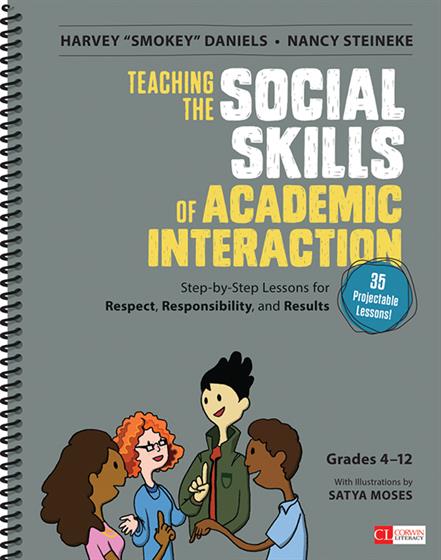Acknowledgments
Part I. Social-Academic Skills: The Missing Link
Chapter 1. The Problem and the Opportunity
Social-Emotional Learning and Academic Engagement
What's Been Missing in School Reform
Why We Must Teach Social-Academic Skills Now
How to Address These Problems and Seize the Opportunities
All Social Skills Programs Are Not Alike
Our Theory of Action
Chapter 2. Theory and Research on Social-Academic Skills Training
Research Base
Recollections
Starting With a Partner
Building a Community of Acquaintance
Building a Community of Respect, Inclusion, and Gratefulness
Taking Personal Responsibility
Teaching Interpersonal Skills Explicitly
Stages of Learning Social Skills
Positive Interdependence
Reflection and Celebration
The Bottom Line
Chapter 3. How to Use This Resource
Overview
A Guide to the Slides
Structure of the Lessons
Order of the Lessons
The Tips
Assessment and Grading
Trouble-Shooting Questions
Part II. Lessons for Building Social-Academic Skills
Chapter 4. Getting Acquainted
Lesson 1. Forming Partners
Lesson 2. Interviewing Your Partner
Lesson 3. Home Court Advantage
Lesson 4. Friendliness and Support
Lesson 5. Classroom Climate Posters
Chapter 5. Building Collaboration Skills
Lesson 6. Quiet Signal
Lesson 7. Using Quiet Voices
Lesson 8. Asking Follow-Up Questions
Lesson 9. Think-Pair-Share
Lesson 10. Good Partner Traits
Chapter 6. Advanced Partner Work
Lesson 11. Active Listening
Lesson 12. Extending Conversation
Lesson 13. Expanding Acquaintance With an Appointment Clock
Lesson 14. Mingle Jigsaw
Chapter 7. Moving Into Small Groups
Lesson 15. Group Membership Grid Interviews
Lesson 16. Sharing the Air
Lesson 17. Saving the Last Word
Lesson 18. Write-Arounds
Lesson 19. Gallery Walk
Chapter 8. Ongoing Discussion Groups
Lesson 20. Establishing Group Ground Rules
Lesson 21. Overcoming Off-Task Triggers
Lesson 22. Goal Setting for Group Improvement
Lesson 23. Reinforcing Collaboration With Table Cards
Lesson 24. Compliment Cards
Chapter 9. Arguing Agreeably
Lesson 25. Text Nuggets: Finding Evidence
Lesson 26. Human Continuum
Lesson 27. Where Do You Stand?
Lesson 28. Hearing Everyone's Ideas First
Lesson 29. Arguing Both Sides
Lesson 30. Civilized Disagreement
Chapter 10. Small-Group Projects
Lesson 31. Developing an Assessment Rubric
Lesson 32. Planning Group Projects
Lesson 33. Keeping Individual Project Logs
Lesson 34. Midcourse Corrections
Lesson 35. Being an Attentive Audience Member
Resources
Appointment Clock
Membership Grid
Group Meeting Procedures
Thin-Crust Cheese Pizza Rubric
Project Rubric
Group Work Plan Form
Individual Group Member Work Plan Form
References and Further Readings
Index
About the Artist




